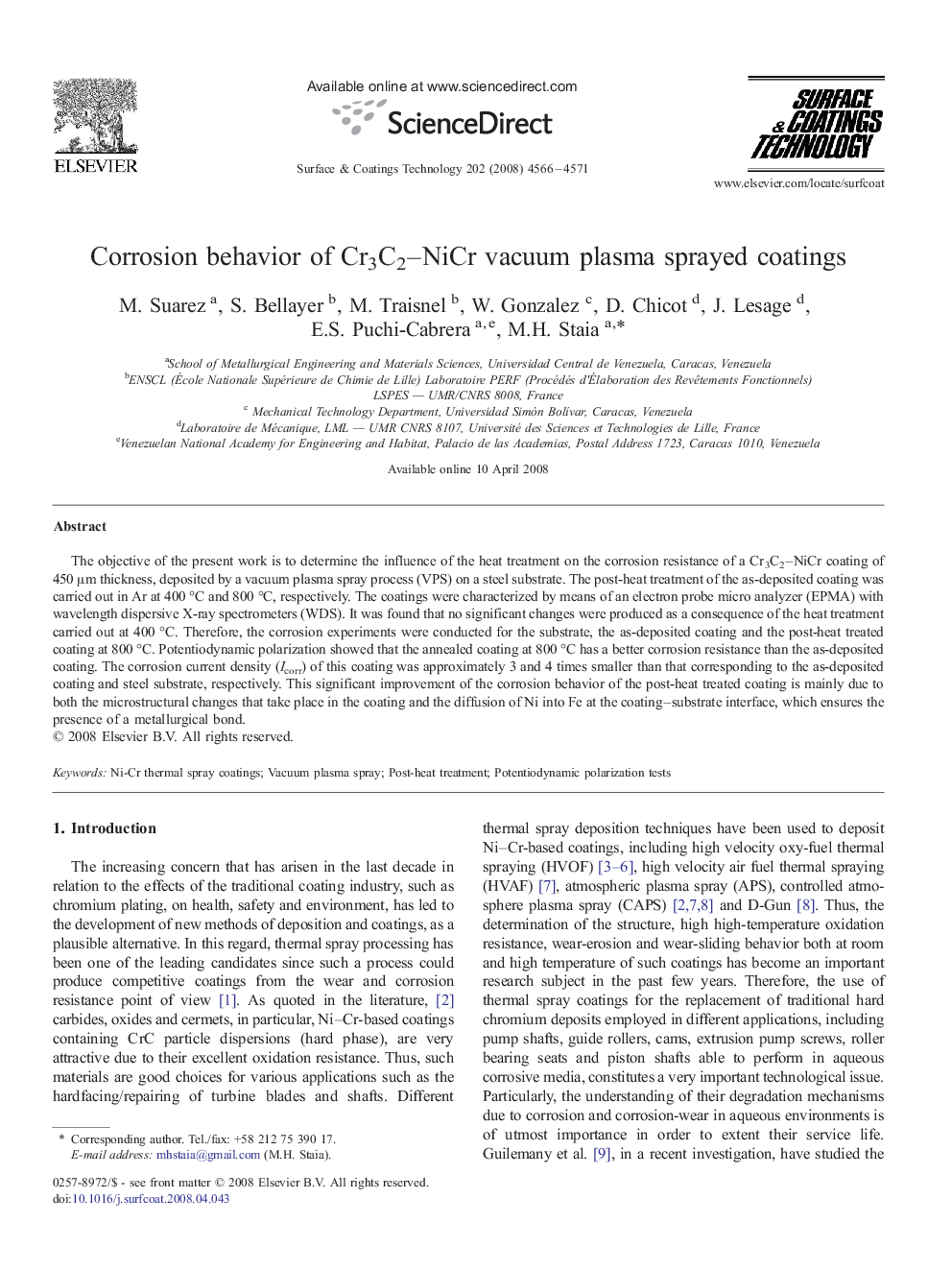| Article ID | Journal | Published Year | Pages | File Type |
|---|---|---|---|---|
| 1660937 | Surface and Coatings Technology | 2008 | 6 Pages |
The objective of the present work is to determine the influence of the heat treatment on the corrosion resistance of a Cr3C2–NiCr coating of 450 μm thickness, deposited by a vacuum plasma spray process (VPS) on a steel substrate. The post-heat treatment of the as-deposited coating was carried out in Ar at 400 °C and 800 °C, respectively. The coatings were characterized by means of an electron probe micro analyzer (EPMA) with wavelength dispersive X-ray spectrometers (WDS). It was found that no significant changes were produced as a consequence of the heat treatment carried out at 400 °C. Therefore, the corrosion experiments were conducted for the substrate, the as-deposited coating and the post-heat treated coating at 800 °C. Potentiodynamic polarization showed that the annealed coating at 800 °C has a better corrosion resistance than the as-deposited coating. The corrosion current density (Icorr) of this coating was approximately 3 and 4 times smaller than that corresponding to the as-deposited coating and steel substrate, respectively. This significant improvement of the corrosion behavior of the post-heat treated coating is mainly due to both the microstructural changes that take place in the coating and the diffusion of Ni into Fe at the coating–substrate interface, which ensures the presence of a metallurgical bond.
